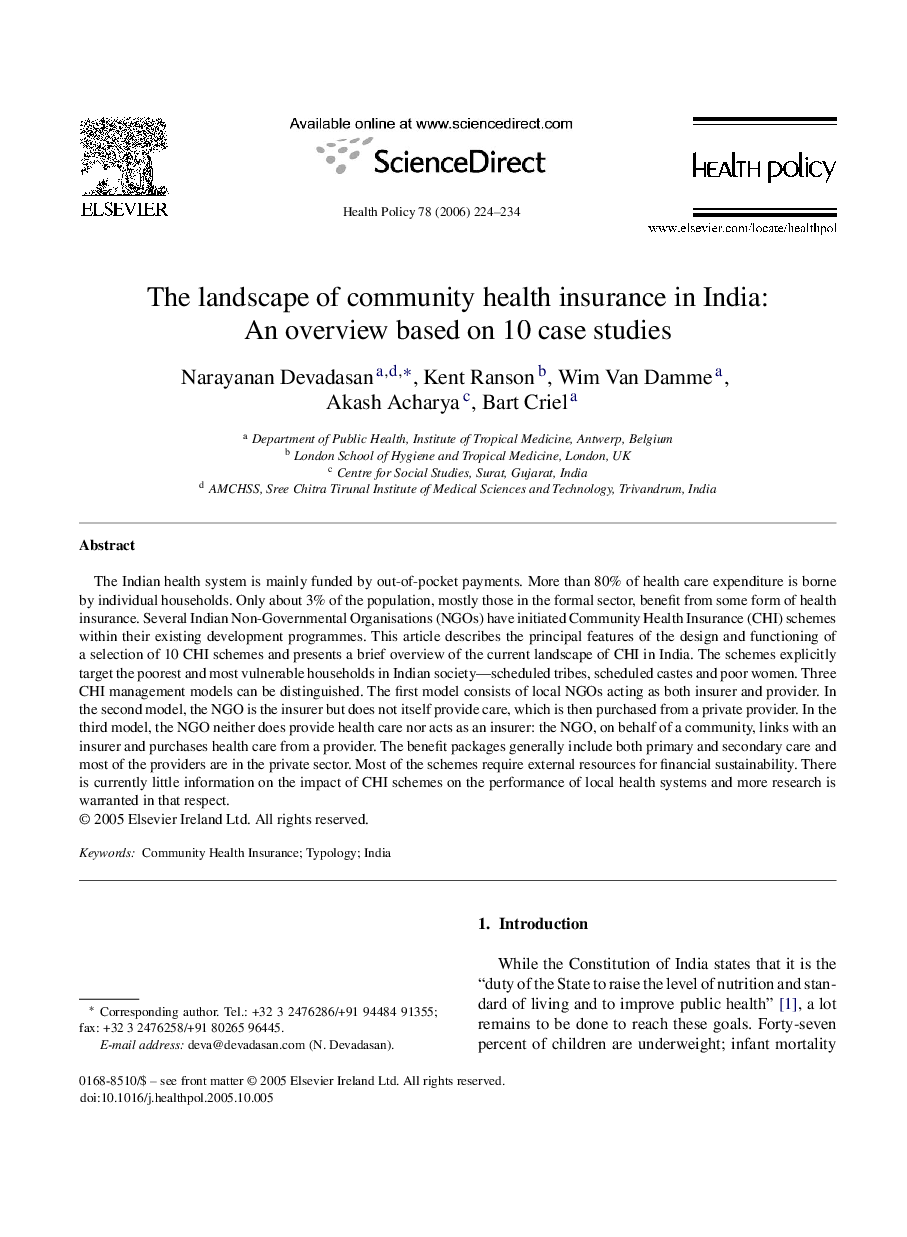| Article ID | Journal | Published Year | Pages | File Type |
|---|---|---|---|---|
| 4199026 | Health Policy | 2006 | 11 Pages |
The Indian health system is mainly funded by out-of-pocket payments. More than 80% of health care expenditure is borne by individual households. Only about 3% of the population, mostly those in the formal sector, benefit from some form of health insurance. Several Indian Non-Governmental Organisations (NGOs) have initiated Community Health Insurance (CHI) schemes within their existing development programmes. This article describes the principal features of the design and functioning of a selection of 10 CHI schemes and presents a brief overview of the current landscape of CHI in India. The schemes explicitly target the poorest and most vulnerable households in Indian society—scheduled tribes, scheduled castes and poor women. Three CHI management models can be distinguished. The first model consists of local NGOs acting as both insurer and provider. In the second model, the NGO is the insurer but does not itself provide care, which is then purchased from a private provider. In the third model, the NGO neither does provide health care nor acts as an insurer: the NGO, on behalf of a community, links with an insurer and purchases health care from a provider. The benefit packages generally include both primary and secondary care and most of the providers are in the private sector. Most of the schemes require external resources for financial sustainability. There is currently little information on the impact of CHI schemes on the performance of local health systems and more research is warranted in that respect.
